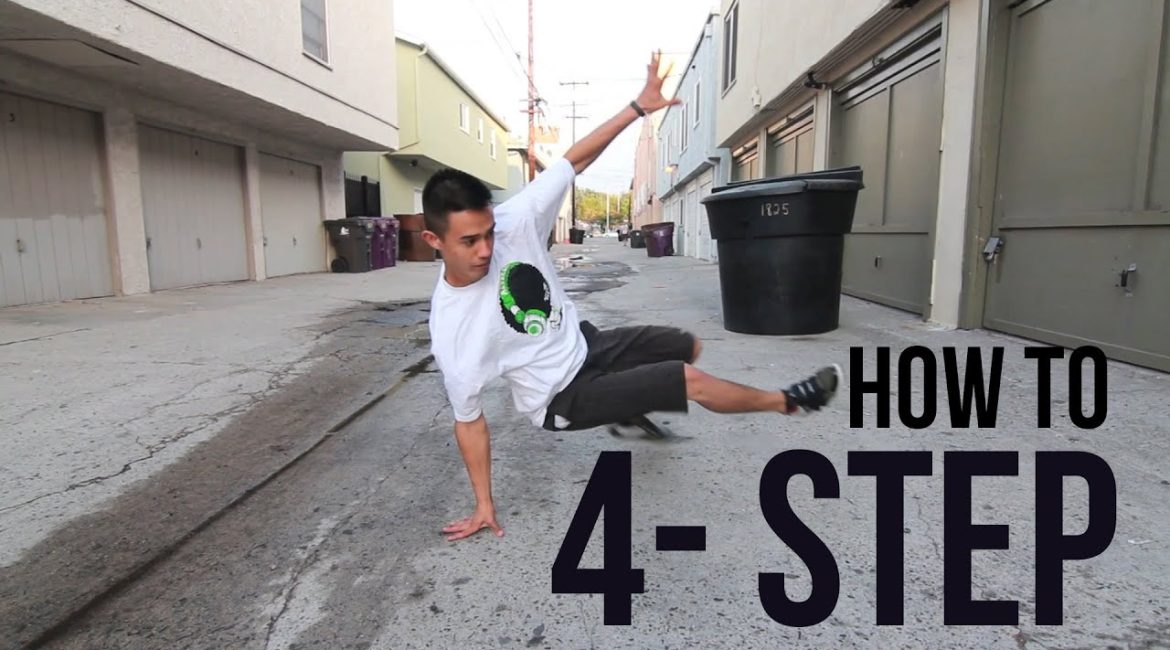Breakdancing is not just a dance; it’s a form of artistic expression that combines rhythm, athleticism, and raw energy. Among the foundational moves that every breakdancer needs to master is the 4 Step. Known for its fluidity and circular motion, the 4 Step is a pivotal element in the arsenal of beginner and advanced b-boys and b-girls alike. This blog post is dedicated to breaking down the 4 Step, helping you understand its mechanics, and providing tips to polish this essential footwork technique.
Understanding the 4 Step in Breakdancing
The 4 Step is a basic yet dynamic part of b-boying footwork that involves a sequence of movements where the dancer uses both legs and hops to create a circular flow. This move not only enhances the dancer’s agility and rhythm but also serves as a bridge to more complex patterns.
Step-by-Step Breakdown
Step 1: Starting Position
Begin in a push-up position. This starting stance is crucial as it sets the foundation for the proper execution of the subsequent steps.
Step 2: The First Hops
Initiate the move by swinging your left leg under your body while maintaining a straight leg. Perform two hops on your right foot as you swing. These hops are performed in place, helping to propel your body around in a circle.
Step 3: Switching Sides
After completing the two hops on your right foot, switch to your left foot and repeat the hopping motion. This time, swing your right leg under your body, similarly keeping it straight.
Step 4: Completing the Circle
Continue the movement by alternating the swinging and hopping between your legs. Each cycle consists of four counts, correlating with the name “4-Step.” The motion should be smooth and continuous, creating a circular flow as you move.
Techniques to Enhance Your 4 Step
- Keep Your Legs Straight: It’s essential to keep your swinging legs straight. This not only helps in maintaining the aesthetics of the move but also ensures you achieve the proper momentum needed for the circular motion.
- Stay on Your Toes: Performing the 4-Step on your toes rather than flat feet adds to the lightness and agility of your movements. This technique allows for quicker steps and smoother transitions.
- Control Your Speed: While speed can make the 4 Step look impressive, control is equally important. Start slow to master the technique and gradually increase your speed as you become more comfortable with the move.
- Use Your Arms for Balance: Your arms play a crucial role in maintaining balance and aiding in the circular motion. Use them effectively to counterbalance the weight shifts as you hop and swing.
Common Mistakes to Avoid
- Bending the Legs: Keeping your legs straight is a challenge for many beginners. Bending the legs can disrupt the flow and make the steps look sloppy.
- Losing Rhythm: The 4-Step is rhythmic. Losing the beat can throw off the entire sequence. Practice with music to ensure you keep time with the beats.
- Inconsistent Hopping: Uneven hops can cause you to lose balance and momentum. Focus on making each hop consistent in height and distance.
Practice Drills for Mastery
- Slow Motion Practice: Perform slowly to ensure you understand each movement’s mechanics. Gradual practice helps in building muscle memory.
- Mirror Practice: Use a mirror to monitor your form. This feedback is invaluable as it allows you to correct your posture and leg movements in real-time.
- Integration with Other Moves: Once you are comfortable with the 4 Step, start integrating it with other footwork like the 6 Step. This helps in creating a seamless flow in your routines.
Conclusion
The 4 Step is a fundamental breakdancing move that lays the groundwork for more intricate and explosive routines. It requires practice, patience, and perseverance to master. Dedicate time to refine each aspect of the 4 Step, and don’t be discouraged by initial difficulties. Remember, every expert was once a beginner. Keep practicing, stay focused, and most importantly, enjoy the journey of becoming a skilled breakdancer. With time and effort, the 4 Step will become a natural and fluid part of your dance repertoire, enhancing both your performance and your confidence on the dance floor.


Leave a reply